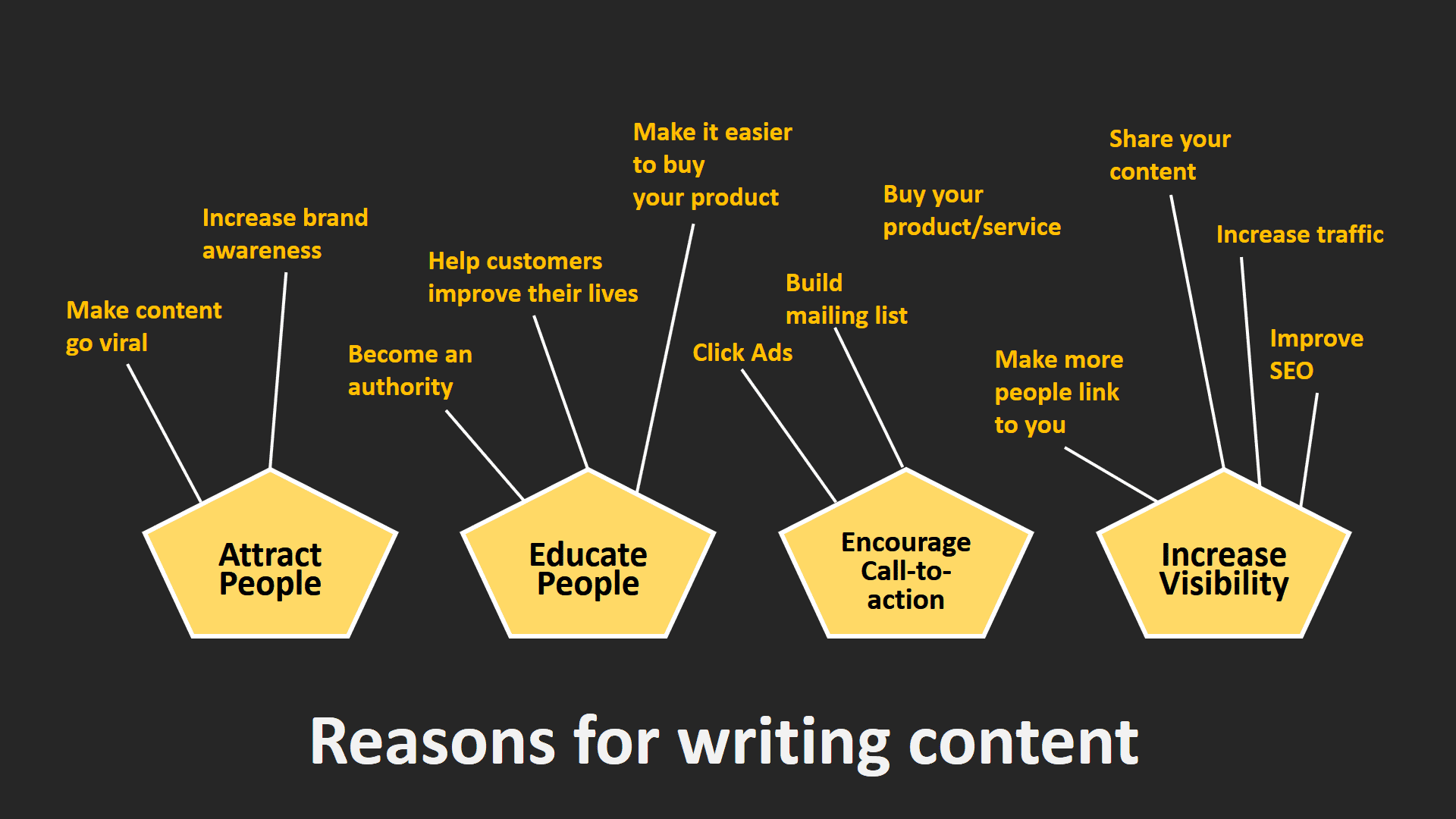Are you constantly running out of content writing and blogging ideas? Then we are on the same boat.
I write for my own blog. I also write for many clients. Most of the clients send me topics but there are some who insist that I provide topics to them.
Therefore, I don’t just need to come up with new content writing ideas for my own blog, but also for blogs and websites of my clients. How do I do that?
Some of the ideation happens on autopilot and some happens with lots of research, reading and constant looking around.
Why is there a problem in getting new content writing ideas?
To maintain your visibility, you need to publish regularly. How regular you are depends on your content marketing strategy. I try to publish every day for my blog although I must confess, I’m not as regular as I should have been. I’m trying to be now.
Most of the clients cannot afford to publish every day. So, they publish either once a week or twice a week. No matter what your frequency is, you eventually run out of content writing ideas. In the beginning it’s quite exciting because you are bubbling with ideas but as you write regularly (provided you are consistent) you run out of things to say.
It is like a conversation between two individuals. There are only finite things you can talk about and eventually, you run not of topics. The same happens when you are writing content for your website. After a while, you run out of topics.
Then how come there are so many blogs that have been publishing awesome content for years? And they publish almost daily.
Listed below are a few ways you can have an ongoing stream of content writing ideas for your website and blog
Subscribe to the feeds of different blogs
You can use a tool like Feedly to subscribe to the feeds of your favorite 20-50 blogs. These blogs, preferably big names in your niche, publish almost every day. Even if not every day, 10-15 blogs out of these will have new content. Don’t copy their ideas but you can use their content for inspiration.
Another good thing about established blogs is that they publish lots of useful information that you can use (after citing them) for your own content writing efforts.
So, in the morning whenever you need new content writing ideas, just go through your Feedly feeds and start writing.
Maintain a journal of content writing ideas
This can be a notebook. You can use OneNote. You can use Google Keep. You can also use an Excel sheet. Whenever you come up with a new blogging idea you jot it down at a safe place that you can easily find. I prefer to keep all my content writing and blogging ideas using OneNote because I find it easiest to maintain intricate hierarchies of information.
Some people also use Pinterest to simply pin blog posts from other sources so that they can visit their dashboards whenever they cannot come up with some great content writing or blogging ideas.
Keep an eye on social media feeds
Do you like to spend time on Twitter, Facebook or LinkedIn? There also you can follow your favorite publications. These publications post links on Twitter, Facebook and LinkedIn whenever they publish new content. You will be instantly notified.
You also find a wealth of information on social networking platforms that can stimulate completely unique content writing and blogging ideas.
Accept guest blog posts
Even if sometimes you cannot come up with great content writing and blogging ideas some guest bloggers can. Guest bloggers won’t approach you unless you have crossed a threshold – your page rank has improved or your search engine rankings are better and they can easily find your content and get impressed.
But once you reach a stage where people begin to approach you for guest blogging opportunities, don’t refuse them. There comes a time when so many people will approach you for guest blog posts that you won’t have to constantly think of content writing and blogging ideas for yourself. Make sure you maintain quality standards.
Get content writing ideas from your own blog
Again, you must have published for a few months. When writing a blog post or a web page you often divide your various ideas into headings and subheadings. Sometimes these headings and subheadings can be expanded into complete blog posts.
For example, I wrote a blog post on What is search intent and in this blog post, there is a subheading called Informational search intent. There are other subheadings such as navigational search intent, commercial search intent, or transactional search intent. Don’t you think individual blog posts can be written on these search intents? Surely they can be.
You can also re-purpose your existing content by curating themed blog posts and web pages. For example, I can curate all my copywriting blog posts into a single blog post.
Write a series of blog posts on a single topic
A hit movie often has a sequel. A TV series that does well has seasons. Similarly, if there is a blog post that generates lots of traffic, you can write a sequel or a prequel. A sequel means, ever since you have written that blog post, you must have learnt something new that you can add. Or you can present a completely different take on the same topic to intrigue your readers.
This you can do with even those blog posts that didn’t do well but you feel that they have the potential to generate lots of traffic for you. Without duplicating content, write their variations. Rewrite them from a different perspective. You can contradict yourself in a certain blog post by writing completely opposite of what you said previously, but in such a convincing manner that people don’t doubt your judgement.
Link to other blog posts and articles
Although most of your content must be original, ideally, should come from you, you can also link to other blog posts and articles to keep your content writing and blogging idea engine smoothly functioning.
Suppose, you come across a blog post you really like. Although right now you cannot come up with a similar, complete blog post by yourself, you have some pointers to share with your readers regarding the contents of the blog post. You can quickly write a couple of paragraphs and then you can link to the original blog post. This way you can write lots of content for your website.
But ultimately, if you write most of your web pages and blog posts like this, Google may think that you are publishing thin content. So do that with discretion. I do it occasionally.
Continuously coming with great content writing and blogging ideas can be a challenge but if you really get involved in writing and publishing content, you will be surprised to know that most of the ideas begin to come to you on your own. Something or the other keeps happening, and you keep stumbling upon great writing ideas.
















